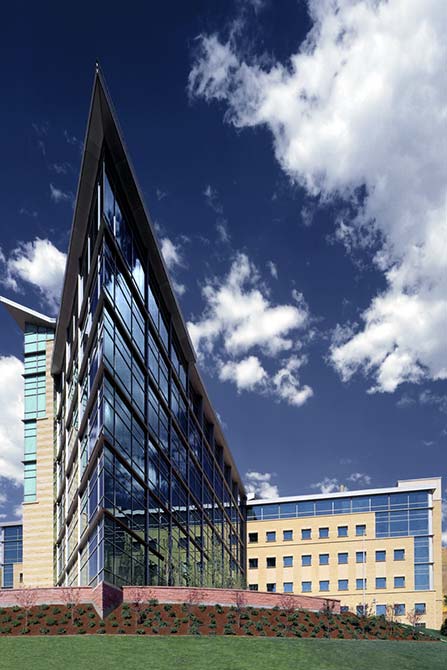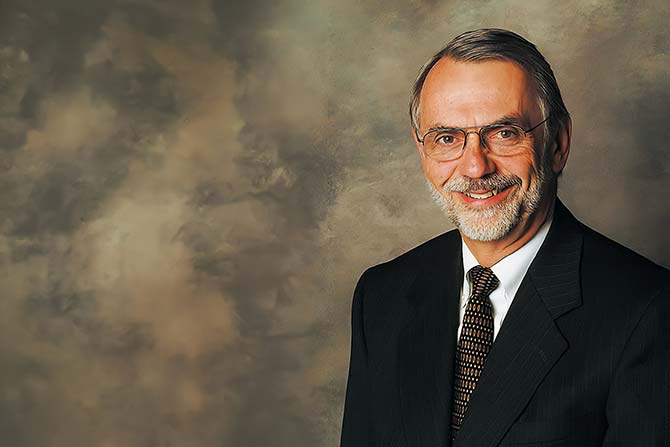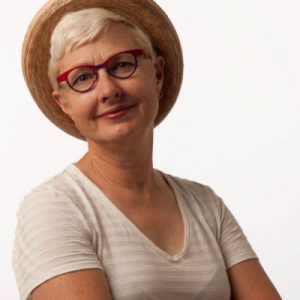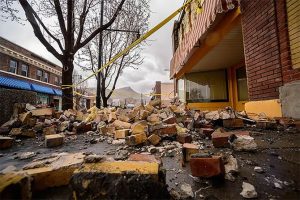When did you decide to become an architect?
When I was four years old, I was playing in the sandbox and making houses, and my playmate, Patty, made a house that looked like an anthill. I had a little butter knife, and I carved it and shaped it into a form. My mother was looking out the window and said, “Tommy, are you going to be an architect?” I said, “What’s an architect?” “They design buildings.” And I thought, “Yeah.” Then in kindergarten, when people were drawing pictures of trees and clouds and puppies, I drew a picture of the nearby building. When we had scrapbooks, I would make houses and build things. It’s what I always wanted to be, and I’m too stubborn. You can’t persuade me not to.
Talk about going to school to become an architect.
I went to Cornell University in New York. A neighbor’s older brother had gone there and said it was the best school. My counselor even said, “Don’t go there; you’ll never make it.” Well, I’m stubborn, so I had to do it. Wisconsin, where I was from, didn’t have a school.
I was accepted at Cornell. I think I got in on a prayer. I wasn’t the top of my class, but I was involved in a lot of things. I was president of the class, I was a drum major and I was in the band, orchestra and student council. Cornell was a tough school, and a lot of kids were from prep schools in the East. They were very good at the liberal arts. I struggled in the liberal arts, and there were points where I wanted to quit. But somehow, I did very well in the design architecture program.
My father literally went bankrupt after my first year. It’s an expensive school. He had money, but then he lost it all. He said I couldn’t go back. And I said, “I am going back.” He said, “You can’t, there’s no money.” I said, “I’m going to do it.” See, I’m stubborn.
So, I went back. I used some money that I had saved to go on an LDS mission. I got through my second year, but I had to wash dishes, wait on tables, cut grass and clean gutters. A lot of my friends who were very rich were traveling to the Alps for a Christmas vacation, and I was taking a Greyhound bus home or hitchhiking. It taught me work, and it was a good experience. It was painful, but even painful things teach you how to overcome difficulties. It taught me to question, to be a critical thinker, to be more analytical and to challenge things.
After my second year of university, I was out for three years. I went on a mission, and I had to earn money to go back in. Then I ran out of money in my fourth year. My family had no money. I had no money. It was in an expensive school even though I was working, I had run out of options. I went to the dean and said, “I need to drop out,” and told him my situation. He said, “We knew that; I wanted to see if you were going to exhaust all your resources. We have money for you. We’ll make sure that you can graduate”. I don’t know if he saw that there was some ability, but that was a gift.
In 1970, I graduated with a five-year degree. I got a job — $700 a month, $8,400 a year — at a premiere firm: Fitzhugh Scott. I was so excited to work around these very talented people. Some of the first work I did was the expansion of Eero Saarinen’s War Memorial in Milwaukee. That was a privilege. One of the first renderings I did was on the cover of Progressive Architecture.
But one thing you learn in architecture is that the market goes up and down. I got caught in a downturn, and they laid off three of us. Next, I went to a developer firm. They did condos and rental units; everything was quick. I learned to design quickly and how to work in a team. The boss would come in and say, “I need this by 1:00,” and it was 11:30. We’d all get around a table and draw. I saw that that wasn’t taking me where I wanted to go, so I worked for another firm that did medical, housing and financial institutions.
My wife comes from California, and we decided to move. I interviewed with firms in California and Arizona. They said, “You have a nice portfolio, but if I were you, I’d go to a small town in Mid-America and hang out your shingle.” I said, “Why? You have this beautiful firm.” They said, “It’s not all it’s cracked up to be; find a little firm, a little town, and hang out your shingle.”
I was coming through Logan, and I missed Main Street. I stopped at the red light, and there on the side was a sign that said Schaub Haycock & Associates (the forerunner of Design West). I had my portfolio with me and thought, “Why don’t I go in and interview?” Then the light turned green, so I drove back to Milwaukee.
A couple of years later, I met Tony Wegener at a conference in Michigan. I said, “You’re from Logan?” He says, “Yeah, what do you know about Logan?” And I said, “Well, if I’m not mistaken, your office has two curved fences, and it’s a green bungalow on the north side of the street.” Then I told him a fib, “My family’s coming out to Yellowstone this summer. Do you mind if we stop in and see you?” He said, “Yeah, you might as well come in.”
I went up to my hotel room and called my wife, and I said, “We’re going to Yellowstone this summer.” So, I came out and was very audacious and said, “I want to be a partner.” I was 28 or so. I wasn’t ready, but that’s what I said. They said, “Well, I don’t know if you can do it now,” but he called me eight months later and said, “We have a position.”
I joined them in ’76. They put me in charge of the Logan Regional Hospital. I had done one addition to a hospital prior to that, so I had no experience. I had never done shop drawings, I had never done construction administration and I had never led a team. I had designed, but I had never done working drawings, and I was in charge of this 180,000-square-foot new hospital. But you learn, you watch, you listen and the best thing is you find the people that have talent, and you learn from them; so, the team does it. The project won an AIA award. The project made money because I learned how to manage.
After three and a half years, I was burned out. I wanted to do something that was quicker, smaller, nimbler. So, I started my own firm. I had no money. This was 1980, during a bad recession and nobody was hiring architects — nobody was investing, and interest rates were 14 or so percent. It was the dumbest time to start a firm, especially in Logan, not really the center of design. People told me, “You’re never going to survive. There’re too many architects.” I said, “They’re going to have to move because I’m going to do it.” Again, stubborn.
Pretty soon, I had an LDS Stake Center, and then I had another Stake Center, and we had the city hall. Then I had a manufacturing plant and I had to hire people and get more work and get more work and hire people. The key to success is having great people. The first key person was Kim Campbell, who now has his own firm in St. George. Bruce Haslem was a great partner because he also had a magna cum laude degree in business finance, so he could manage the money. I hired John Erdman over the phone from Wisconsin. He became the most profitable member of our company ever. We hired Brent Hardcastle out of Texas.
We got into industrial work and then into healthcare. Bruce, Brent and I had healthcare experience, and Intermountain Health Care hired us. Then Don Finlayson connected with us. He was from Hansen Lind Meyer, an international firm. He first came as a consultant, and then finally, we realized, “Let’s work together.” Here, we had an internationally famous healthcare planner. He had been used to working in firms of 8,000-9,000 people. We had 15, maybe 20. I put him in charge of the new Salt Lake office. Pretty soon, the office was up to 30, 40 and 60 people.
One of our major competitors was Thomas Peterson Hammond, who were healthcare planners/designers. We were always competing, then we collaborated on a $110 million project for the University of Utah. We decided that we worked together so well that we’d merge. Now, we were a 135-person firm. The culture was so good that we soon didn’t know where anybody came from. We didn’t know if they were from Jensen Haslem or from TPH.
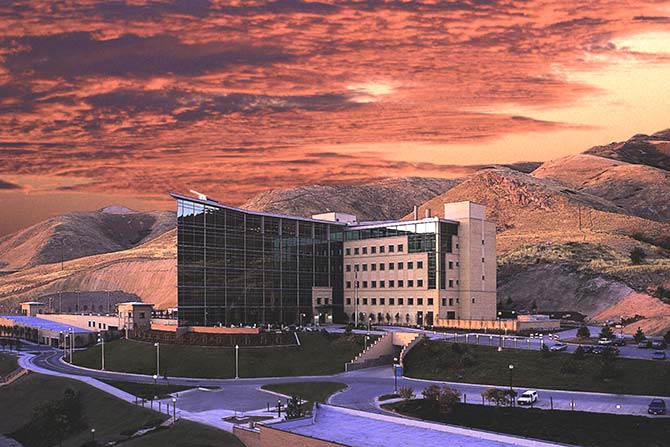

What was your role?
I started off doing everything. Then I focused on design. Bruce Haslam came to me and said, “Tom, we’ll do the work. You find the work.” So, I started to become a marketer. That’s what I was doing when Don joined us and I was president. After the merger, the main body of the firm was in Salt Lake, but I was in Logan. So, I became chairman of the board, and he became president.
Then we hired a great designer, Dave Cassil. I realized that my role was not designing. So, I did marketing, risk management, problem-solving, and client relations. I redefined myself three or four times, and that was actually interesting. My focus was on building a firm, focusing on the people, and getting them to do what they do best. The gift came in the form of talented people like Bruce, Don and David. We always seem to get the right people at the right time. The firm kept growing, and the fun was in growing the firm.
We teamed with Fred Babcock, pursuing the Huntsman Cancer Center. He had a relationship with the Huntsmans, and we had a technical background in laboratories and medical. In the interview, we were competing against five or six national firms, SOM, NBBJ … I gave the technical presentation, then Fred got up, and it was like a spiritual experience. He talked about giving hope to the patients, giving hope to the families and making a cancer center that would serve and bless people. And bang, that won the job.
I was managing the first phase. I was way over my head. We did the first phase and they wanted to do another phase and another phase. Don Finlayson had joined us by the second phase. This was his forte; he could manage huge jobs. The timing was just right. They’re still doing phases, and each of these are $150 million or so.
When we met with Karen Huntsman, she said, “This is about giving hope.” Our conversations were about how we build hope. The facility was not designed as a hospital. It was designed more like a lodge or a resort, a hotel, so patients felt like they were being treated well. They all had beautiful views into the valley or up the mountain. The facility was designed for people who had been told that they had cancer. This would give them some brightness. The sunshine came in, and they had decks they could go out on. Instead of being down a corridor with green walls and little cubicles, they were treated like they were in the best lodge in Park City.
What other projects are you particularly proud of?
During the recession of 2008, I got a call from an architect from Philadelphia. He said, “We understand you’ve done data centers, and you’ve done federal work, government work. Our firm would like to collaborate with you on a project in Utah. We did one of these projects in Virginia, and that’s the only one. It’s kind of a larger project.” And I said, “100,000 square feet?” He said, “It’s actually several million square feet.” That is the National Security Agency at Point of the Mountain. Huge job, important job, nobody sees it because it’s top secret.

Tell us about your time teaching overseas.
I got a call one day from a cousin in Jordan. He asked me to come and teach at an American University in Jordan. I thought my wife would just say, “That’s ridiculous.” ISIS was fighting over there. But she said, “I think this would be interesting.” I retired from Architectural Nexus. We packed our bags, rented our house, went to Jordan and taught at a university there.
Two of the classes I taught I had no preparation for except, “Go into this room and teach the class.” I said, “What class?” I asked the students, and they said, “This is graphic design.” I’m not trained in graphic design. I said, “Okay, what do you want to learn?” They said, “We want to know concept development.” I thought, “Okay, I can do that,” so I got out my whiteboard markers, and we started discussing what a problem was and how to solve it. Our experience in learning how to solve problems helped me teach those students who were Muslim, Christian and Arab. They were from all over: Armenians, Egyptians and Turks.
Another course was called Cultural Development. One young Palestinian woman said, “I want to take one street in Amman, Jordan, and change it from incandescent lighting to LED lighting on the streets.” I said, “Do it.” She went off and, in six weeks, she came back with all of the metrics and financial studies, the operational cost and how much lumens. It was great. Three months after I returned, there was an article in the Amman, Jordan Times, that the municipality of Amman were changing all of their lighting from incandescent to LED. She changed the world.
What happened when you came back?
I came back and talked to Nexus and said I’d like to join them again. They said, “You have too many gray hairs. We want the young people to do the marketing.” I called construction companies, and Wadman was a great fit. My job then was to go to my former competitors and take them to lunch. It turned out that it was not marketing; it was making friends. That’s really what it’s about — loving people and having relationships that you can build. I counseled some of them about mergers or getting better profitability because I had already gone through that.
Disappointments?
Every time I lost a job, it broke my heart. I still walk by those buildings and say, “Dang.” But once I learned that we weren’t selected, I let go of it and moved on to the next project. It always hurts to lose a project, but you move on. We did fine. I suppose if I was highly egotistical, I would keep trying to think that I was the best designer, but I found people who were much better. So, I moved over and found different things to do. I could let that bother me, but it doesn’t because I can enjoy the work that they did.
Explain the evolution of architecture during your career.
When I started, it was drafting pencil on paper, and then to mylar, and then pin bar and then computer. Now they’re into things that are way beyond me. You used to wait till the end of a job and then get a rendering by some artist out in California. Now they want a rendering every week or every day. The ability for the designer, using computers, to see things in 3D and rotate and expand and pull things apart blows my mind. I believe that great architecture comes out of it. Some doesn’t. Just because you have a fancy tool doesn’t mean you’re going to have a great sculpture.
Materials have changed. We used wood and concrete and brick and steel. Now it’s all these polymers and exotic materials that create finishes way beyond what we thought of. The structural systems and new technology … think about what Santiago Calatrava does! Zaha Hadid created organic architecture. Gehry’s Museum in Bilbao — when I walked into that building, I started crying because it was a spiritual experience that was created out of engineering. You can use the technology to create something that touches the soul.
Any advice you’d give architects who are beginning their careers?
Architecture, you have to love it. Don’t go into it for the money. You can make some money, but it’s not nearly as much as medical or lawyers. You have to love it, and you have to be willing to sacrifice for it. When I was doing Logan Hospital, I was averaging 16 hours a day, and I got sick, but it turned out to be a good thing. They need to know that. They also need to know that they are good at some things but not good at everything. I thought I was a great designer, and it turned out that I was a much better marketer and other people were better designers. Nobody could tell me that; I had to find it out.
I decided when I was four years old. It turned out to be a good thing for me. I would not want to spend my life selling computers or being a lawyer. I don’t think I could do that. I love interacting with people. I love solving problems. And I think that’s what it’s all about.
